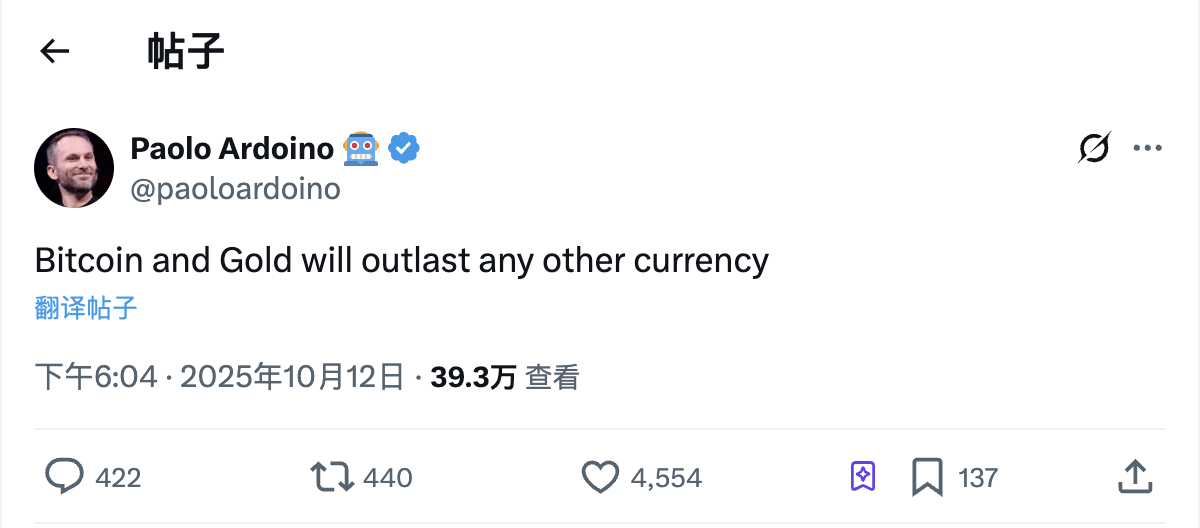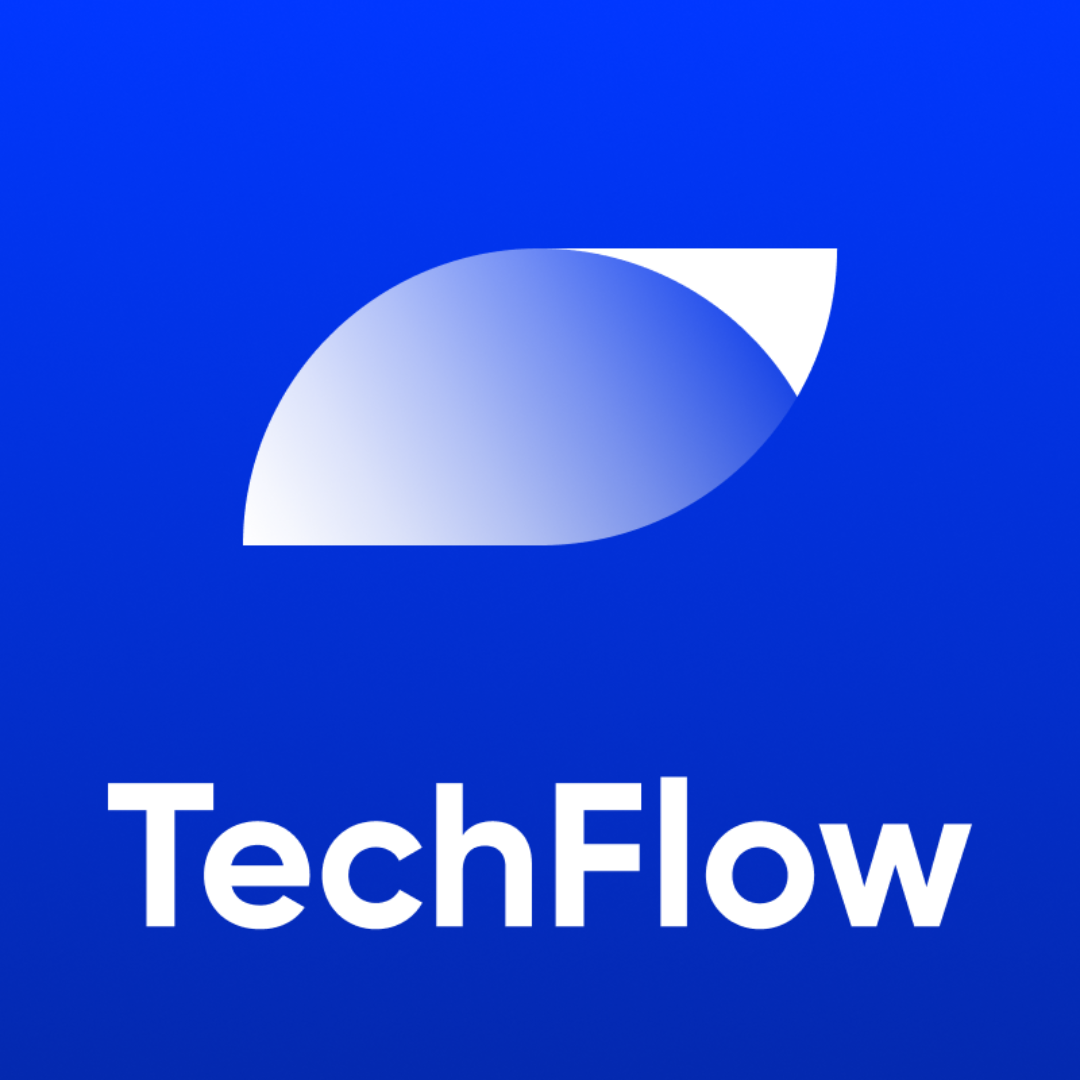Tether, the king of stablecoins, dreams of gold, buying more gold than central banks.
Original author: Liam, TechFlow
In 2025, central banks around the world are launching an unprecedented gold-buying spree.
Central banks in countries such as China, India, Poland, and Turkey purchased a total of over 1,100 tons of gold in the past year, setting a new record since the collapse of the Bretton Woods system.
However, amid this gold rush, a "non-sovereign" buyer is quietly emerging: Tether, the parent company of USDT, the king of stablecoins.
According to Bloomberg, Tether has become one of the world's largest gold buyers. Its latest reserves report shows that as of September 2025, the company's gold holdings will be worth over $12.9 billion, surpassing the central banks of several countries including Australia, the Czech Republic, and Denmark, placing it among the top 30 globally.
Even more astonishing is its speed of gold purchases. In the year ending in September, Tether increased its gold holdings by an average of more than 1 ton per week, ranking third among global central bank systems, behind only Kazakhstan and Brazil, and even surpassing the central banks of Turkey and China.
This does not include its gold bar reserves corresponding to its gold stablecoin (XAU₮), or its private gold investments made with billions of dollars in profits.
Tether doesn't buy paper gold or ETFs; it buys real gold bars.
Unlike most central banks around the world that store their gold in the Bank of England or the Federal Reserve Bank of New York, Tether has chosen to build its own vault and manage it itself. In an interview, CEO Paolo Ardoino revealed that Tether has built "one of the world's most secure vaults" in Switzerland, but declined to disclose the exact location.
DeepFlow TechFlow has learned that Tether is also building a second vault in Singapore to serve its Asian reserve business and the expansion of its gold stablecoin XAU₮.
A crypto company is replicating central bank hardware infrastructure to build its own vault and a globally distributed reserve system.
Recently, Tether has taken an even more ambitious step by poaching talent directly from the core of the gold market.
Bloomberg reports that Tether has poached two top global precious metals traders from HSBC with lucrative offers: Vincent Domien, global head of metals trading, and Mathew O'Neill, head of precious metals financing for EMEA. Both are currently in the notification period for leaving their previous employers and are expected to join the company within months.
Domien also serves as a director of the London Bullion Market Association (LBMA), the de facto standard setter for the global gold market. O'Neill has been with HSBC since 2008 and is a key figure in the European precious metals financing sector.
Upon closer examination, it was discovered that Tether's ambitions extend far beyond simply buying gold.
From gold bars to mines, establishing a complete industry chain.
If building its own vaults and hoarding physical gold is Tether's first step in aligning itself with central banks on the "asset side," then its true ambition in gold goes far beyond being a passive buyer; it aims to make the entire gold industry chain a part of its financial empire.
This framework can be roughly divided into three layers: the bottom layer consists of gold mines and franchises, the middle layer consists of gold bars, and the top layer consists of tokenized on-chain gold.
First, let's look at the most familiar one: XAUT, which is written into the smart contract as part of the gold standard. Tether Gold (XAU₮) is a gold token launched by Tether. Each token corresponds to one ounce of physical gold, which is held in custody by a Swiss vault and meets the "qualified delivery bar" standard of the London Bullion Market Association (LBMA).
The latest official data shows that XAU₮ is backed by approximately 370,000 ounces of physical gold, equivalent to more than 11 tons of metal, all stored in Swiss vaults. Driven by the surge in gold prices, the circulating market value of XAU₮ has exceeded US$2.1 billion.
This means that Tether has two layers of gold exposure:
One layer is the gold reserves listed on its own balance sheet, which can also be used to enhance the credit and risk resistance of the USDT stablecoin itself.
The other layer is the reserves behind the gold token XAU₮, which are restructured into financial products that can circulate on-chain.
For example, Tether launched the open finance platform Alloy by Tether, which allows users to use XAUT as collateral to mint a new synthetic dollar stablecoin, aUSDT.
But Tether wasn't satisfied with that. It wanted to go further in the gold industry chain, so it directly invested in upstream gold concession companies, incorporating the future gold production of the mines into its own asset system.
In June 2025, Tether Investments, an investment entity under Tether, announced that it had acquired a stake in Elemental Altus Royalties, a Canadian publicly traded company. This company focuses on gold and precious metal royalties and streams and owns revenue rights to several mines that are in production or nearing production.
Public information shows that through a series of agreements and shareholding increases, Tether could acquire up to one-third or more of Elemental Altus's shares, becoming a "cornerstone shareholder" of the gold franchise company. It could even provide an additional $100 million in funding to support the merger with EMX Royalty, helping to build a mid-sized gold franchise platform.
Tether not only buys gold bars that have already been unearthed, but also the right to a share of the gold that will be mined from the ground in the future.
Tether is not content with a single asset; it is engaging with the broader gold industry. According to the Financial Times, Tether is in talks with several gold mining and investment companies, hoping to deploy capital across mining, smelting, trading, and franchise revenue to build its own "gold industry matrix."
It is understood that Tether also held talks with Terranova Resources, a gold mining investment vehicle. Although no deal was reached, the signal sent was very clear:
Tether's goal is not simply to make financial investments, but to systematically connect the gold industry chain.
Putting these pieces together, you'll find that Tether's strategy in gold presents a two-pronged attack: a "top-down" approach and a "bottom-up" approach.
Starting from the financial product side, it first has an XAU₮, which uses tokenization to meet the global users' demand for gold and establish a "gold traffic portal".
From the bottom up, it gradually brings the asset side and supply side of the gold industry chain under its control through investment and equity, along with gold bar reserves, mining concessions, and potential mining investments.
Where does the belief in gold come from?
On the surface, Tether's bet on gold can easily be attributed to "gold FOMO, following central banks in buying safe-haven assets."
However, if you extend the timeline and examine the public statements and asset adjustments made by its executives over the past two years, you'll find that it's more like an asset philosophy with a clear worldview:
Use Bitcoin and gold to build a two-pillar security foundation for the balance sheet of a "stateless central bank".
Tether CEO Paolo Ardoino has mentioned on several occasions that he doesn't like the notion that "Bitcoin is digital gold," and prefers to say the opposite: gold is "natural Bitcoin": equally scarce and equally tested over time, one existing in the physical world and the other in the digital world.
In September 2025, Ardoino stated, "As the world becomes increasingly dark, Tether will continue to invest a portion of its profits in safe-haven assets such as Bitcoin, gold, and land." In his view, Bitcoin and gold will "outlive any fiat currency" and are the ultimate value vehicles that transcend economic cycles.

As stated in the XAU₮ promotional video, for over five thousand years, gold has symbolized power, stability, and truth, measured by weight rather than words.

Behind this lies a series of actions Tether has taken on the asset side over the past two years:
On the one hand, Tether's quarterly audit reports show that its asset reserves are highly concentrated in US Treasury bonds, with holdings of US Treasury bonds alone exceeding $120 billion, making it one of the world's largest single holders of US Treasury bonds;
On the other hand, since 2023, Tether has repeatedly emphasized in its announcements that it will use a portion of its quarterly profits to purchase "long-term value positions," first Bitcoin and then gold. The purpose is not to provide USDT with 1:1 collateral, but to strengthen the "hard asset" attribute of the company's overall balance sheet and resist interest rate, credit and geopolitical risks.
Therefore, Tether's bet on gold has at least a few clear motives:
The first level, the most straightforward, is to turn profits into "something that no central bank will print more of."
During periods of high interest rates, Tether has earned over $10 billion in annual profits from its massive holdings of US Treasury bonds, with profits projected to exceed $15 billion by 2025. However, Ardoino is well aware that this "interest rate spread feast" is cyclical, while the expansion of sovereign debt is structural.
Over the past year, he has repeatedly mentioned the so-called "devaluation trade," in which investors, out of concern about the long-term devaluation of sovereign debt and its denominated currencies, have gradually shifted their assets from government bonds and fiat currencies to hard assets such as gold.
The second layer is to protect against extreme risks under the dollar system.
USDT's size has grown to the point where it's on par with small-country currencies and regional banking systems. This forces Tether to consider an extreme scenario: if, at some point in the future, US regulators or the banking system put pressure on it or even freeze its assets, or if the entire dollar system faces systemic risk, relying solely on US Treasury bonds and bank deposits as assets will be too passive.
Gold does not belong to any sovereign credit and can be completely separated from the traditional custody system by building its own vaults. This is why Tether built its own vaults in Zurich and Singapore, instead of keeping its gold in the Bank of England or the Federal Reserve Bank of New York for many years like many central banks.
In the third layer, during the RWA era, gold was the most readily accepted off-chain asset.
In its Q1 2025 announcement, Tether explicitly described XAU₮ as "one of the largest and most compliant tokenized gold products by market capitalization," and emphasized that all tokens are 100% physically backed by gold bars in Swiss vaults.
This forms a clever closed loop:
On the one hand, Tether locks in its spot and long-term gold production exposure by purchasing gold and investing in franchise companies like Elemental Altus; on the other hand, it uses XAU₮ to "slice" this gold and put it on-chain, turning it into DeFi collateral and settlement assets that can be traded and combined globally.
From a business perspective, this is a "DeFi-ization" of the cash flow and valuation of the gold industry chain.
Tether's every asset allocation move resembles that of a company learning how to be a central bank.
It's not just about chasing profits, but about building a new order with code as its boundary and gold and Bitcoin as its anchor.
If the future truly moves towards a multipolar monetary system, then "US Treasury bonds + Bitcoin + gold" will not only be an asset portfolio, but also the balance sheet of this "stateless central bank" that transcends economic cycles.
- 核心观点:Tether正构建黄金全产业链布局。
- 关键要素:
- 黄金储备超129亿美元,全球前30。
- 自建瑞士金库并发行黄金稳定币XAU₮。
- 入股矿业公司布局上游产业链。
- 市场影响:推动黄金资产代币化与DeFi应用。
- 时效性标注:长期影响。



